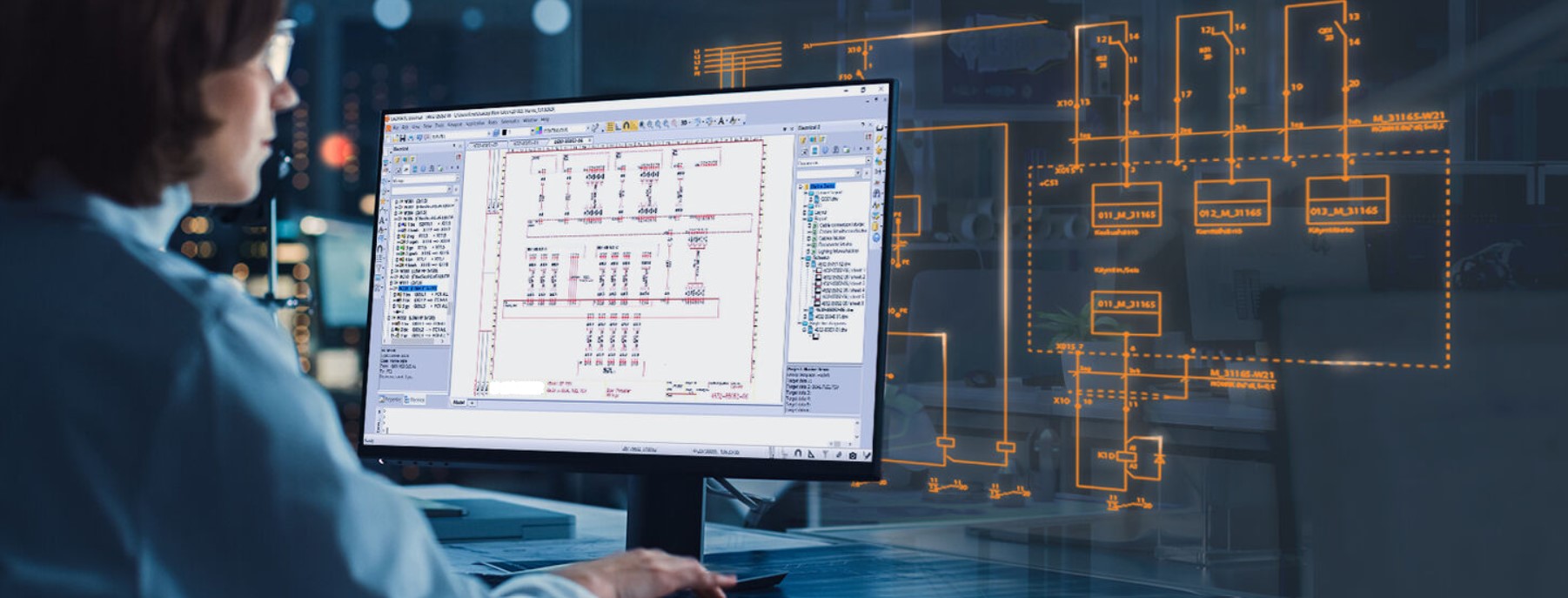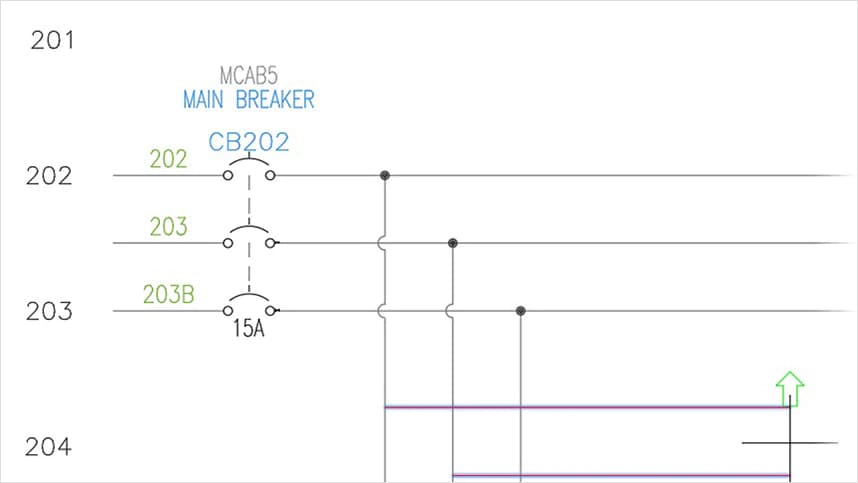Reliable Residential Electrical Design Services for Efficient Home Wiring
Wiki Article
Cutting-edge Electric Design Services for Modern Infrastructure
The evolution of modern-day framework requires innovative electrical design services that not only improve functional efficiency but also address sustainability difficulties. As urban settings grow progressively intricate, integrating modern technologies such as smart grids and renewable power resources comes to be critical. These improvements not just guarantee to enhance energy consumption yet likewise foster resilience versus future demands. Nonetheless, the landscape of electrical design is going through quick improvement, prompting a more detailed evaluation of arising patterns and their effects for long-lasting framework feasibility. What might the future hold for those who embrace these cutting-edge techniques?Relevance of Innovative Electrical Design
Ingenious electric design plays an essential function in contemporary framework, affecting not just efficiency but likewise sustainability. As cities progress and the need for power rises, the demand for advanced electrical systems becomes critical. These systems should not only satisfy present needs however likewise expect future development and technical innovations.A well-executed electrical design can significantly reduce power usage, consequently reducing operational costs and minimizing ecological effect. By integrating renewable resource resources, such as solar panels and wind turbines, cutting-edge layouts can improve energy freedom and durability. Clever grid innovations allow for real-time surveillance and monitoring of power distribution, maximizing efficiency and reducing waste.
Safety is an additional important aspect of electrical design. Implementing extensive standards and innovative technologies can reduce risks linked with electrical failings, guaranteeing a safe and secure atmosphere for organizations and locals alike. In addition, innovative styles promote adaptability, enabling frameworks to integrate emerging modern technologies seamlessly.
Secret Fads in Electrical Design
As the landscape of electrical design remains to evolve, a number of vital trends are shaping the future of the market. One substantial fad is the integration of wise modern technology right into electrical systems. The expansion of the Net of Points (IoT) has actually made it possible for real-time monitoring and control of electrical gadgets, improving performance and facilitating predictive maintenance.One more pattern is the expanding focus on modular design. This strategy permits scalable and flexible services, allowing facilities to adjust to altering requirements without substantial renovations. Additionally, making use of advanced simulation tools and Structure Details Modeling (BIM) is coming to be significantly prevalent, streamlining the design procedure and boosting cooperation among stakeholders.
Furthermore, improvements in materials science are resulting in the advancement of lighter, much more resilient, and energy-efficient components. This advancement is especially essential for high-performance buildings and infrastructure jobs.
Finally, there is a marked change in the direction of data-driven decision-making - industrial electrical design. Leveraging data analytics helps developers enhance systems for performance and cost-effectiveness. With each other, these patterns signify a transformative period in electrical design, improving functionality, sustainability, and strength in contemporary infrastructure
Lasting Energy Solutions
Lasting energy solutions are significantly ending up being a crucial emphasis in electrical design, reflecting a more comprehensive commitment to ecological obligation and source effectiveness. These remedies aim to decrease environmental influence while enhancing power usage in numerous facilities, from household buildings to huge commercial centers.Among the primary approaches involves the integration of sustainable energy resources, such as solar panels and wind generators, into electrical systems. This not just decreases dependence on fossil gas however additionally improves power resilience. Furthermore, cutting-edge energy storage systems, such as innovative batteries, enable effective monitoring and circulation of energy, making sure that excess energy generated during height manufacturing can be utilized during high demand durations.
In addition, energy-efficient design practices are being embraced to enhance total system efficiency. This consists of utilizing energy-efficient lighting, cooling and heating systems, and smart building technologies that adjust and check power use based upon tenancy and ecological conditions.
Smart Grid Technologies
The implementation of sustainable energy services naturally causes the exploration of smart grid technologies, which play a critical role in modernizing electrical systems. Smart grids leverage advanced interaction modern technologies and information analytics to boost the integrity, performance, and sustainability of electricity circulation. By incorporating electronic innovation with conventional grid facilities, these systems help with real-time monitoring, automated control, and enhanced decision-making capabilities.Among the crucial functions of wise grids is their ability to accommodate renewable resource sources, such as solar and wind power. This adaptability not only lowers dependence on fossil gas but also permits for a much more decentralized energy production version. Moreover, smart grids enable need reaction programs, where consumers can readjust their energy usage based upon real-time prices, thereby advertising energy conservation and reducing peak lots demands.
In addition, wise grid technologies boost grid resilience by making it possible for quicker recognition and resolution of failures, ultimately decreasing downtime. With anticipating maintenance and analytics, energies can enhance operations and boost service shipment. As areas and cities continue to evolve, wise grid technologies are crucial for developing a reliable and sustainable electric infrastructure that satisfies the needs of contemporary culture.

Future-Proofing Infrastructure
To make sure long-lasting practicality and adaptability, future-proofing facilities is essential in the rapidly developing landscape of electrical design services. As technology advancements and power needs shift, it is crucial that electric systems are designed with adaptability in mind. This entails including scalable services that can suit future upgrades without necessitating considerable overhauls.
In addition, sustainability should be a keystone of future-proofed styles. Making use of renewable power resources, such as solar and wind, and enhancing power efficiency minimize dependency on fossil fuels, straightening with global initiatives to battle climate modification.
Verdict
By prioritizing sustainability, versatility, and efficiency, these solutions attend to the progressing needs of power systems. The assimilation of clever grid modern technologies and lasting power options boosts durability and decreases operational costs.A well-executed electrical design can significantly decrease energy consumption, therefore lowering functional expenses and decreasing ecological effect. By incorporating renewable power resources, such as solar panels and wind generators, ingenious designs can enhance power self-reliance and resilience. In addition, cutting-edge power storage space systems, such as sophisticated batteries, allow efficient monitoring and circulation of energy, guaranteeing that excess energy produced during top production can be utilized during high demand durations.
Clever grids make it possible for demand reaction programs, where customers can change their power use based on real-time pricing, consequently promoting power preservation and minimizing peak load demands. (electrical load calculation)
As modern technology advancements and power demands shift, it is crucial that electrical systems are created with flexibility in mind.
Report this wiki page